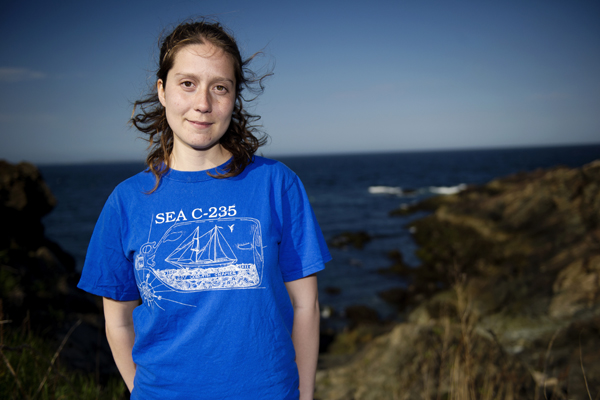Wherefore art thou, dear zooplankton?

This story is part of an ongoing series highlighting Northeastern’s research efforts at Mission 31. Full coverage.
On a good day, corals make happy homes for photosynthetic algae. It’s a cooperative setup, with the algae turning dissolved carbon dioxide into food for the coral and the coral providing a nice roof for the algae.
But due to warming temperatures and ocean acidification, good days are becoming fewer and farther between. More and more, algae are evacuating their coral homes, leaving the corals hungry and susceptible to disease. The phenomenon is called coral bleaching because the algae also do their part to paint the marine invertebrates’ bodies the beautiful colors we’re familiar with—when there’s no one home, the corals turn white.
One way that corals are thought to weather this climate change storm is by increasing their diet of zooplankton, the microscopic animals dispersed throughout the water column. “However, too little is known about zooplankton dynamics specifically on coral reefs to know if this is a sustainable solution for coral recovery from bleaching,” said Amanda Dwyer, a graduate student in professor Mark Patterson’s lab at Northeastern’s Marine Science Center in Nahant, Massachusetts.
To get a better sense of zooplankton’s behaviors and habits, Dwyer will be spearheading one of four Northeastern-led scientific projects during Mission 31, a monthlong underwater research expedition currently underway and led by Fabien Cousteau, grandson of the legendary ocean explorer Jacques Cousteau.
“This is a very cool opportunity to have one whole lunar cycle of data looking at the zooplankton,” Dwyer said. “The tides are based on the moon and so the lunar cycle really has a lot to do with ocean movement and ocean patterns.”
With a whole month of data, Dwyer and her colleagues will provide a foundation on which others will be able to examine important questions about zooplankton dynamics, including how they move both within and between reefs.
For this particular project, she and the four Mission 31 aquanauts—who will be based full-time at the underwater research station Aquarius for the duration of the expedition—will be collecting two types of data. First, they’ll be looking at migration of zooplankton during the night from the bottom of the ocean floor to the sea surface. Second, they will trawl the water during the day at four points along the water column: at about one-half meter down, one meter down, and two meters down, as well as at the surface.

Amanda Dwyer, left, and fellow Mission 31 team member Francis Choi training for the mission at Northeastern’s Marine Science Center in Nahant, Mass. Photo by Mariah Tauger.
They’ll then take these samples back to the lab where they’ll be able to figure out where in the water different species reside at different points during the day.
“Normally zooplankton migrate up to the surface of the water at night when there’s no light because that helps them avoid predation from fish and it’s where their main food source, phytoplankton, is most abundant,” Dwyer said. “And then they go back down to the bottom during the day, which is a safer environment for them.”
While zooplankton dynamics may vary across different reefs due to site-specific conditions, this 31-day snapshot will provide a general baseline to begin comparing zooplankton availability with other stressed and unstressed reefs, Dwyer said. This would allow researchers to make predictions about a reef’s potential for success.





